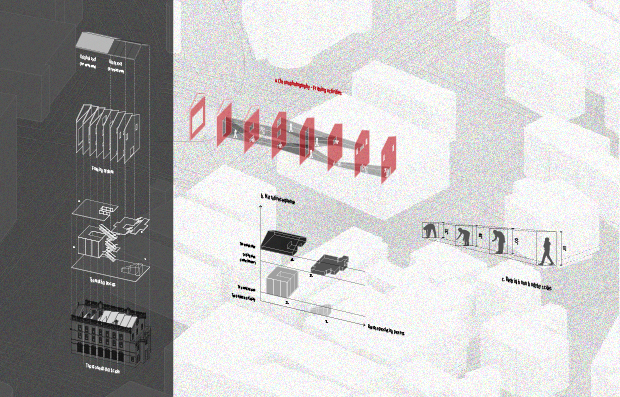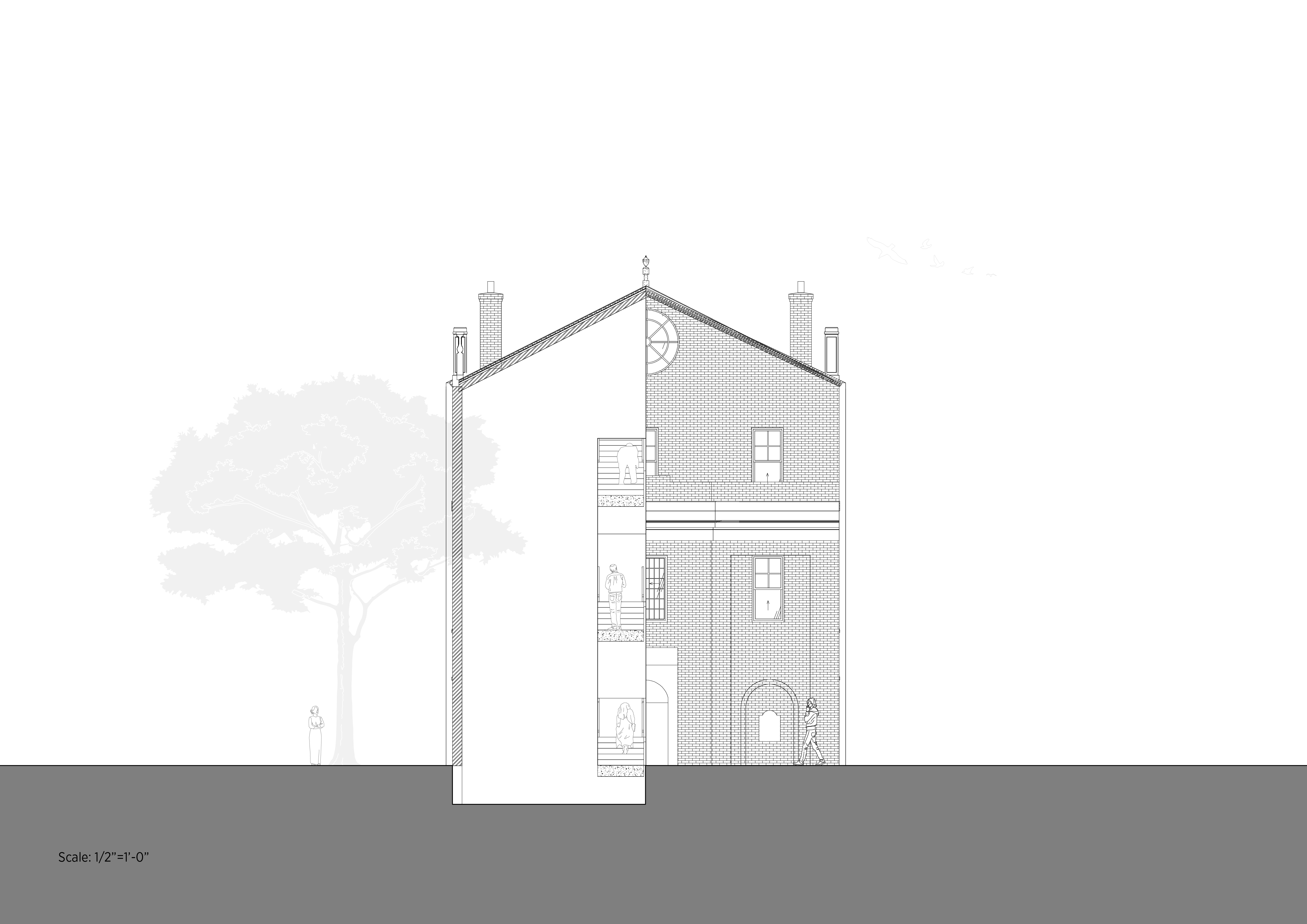
Tea Warehouse
Fall 2020
Providence, US
Fall 2020
Providence, US
When we go to a market place to get a commodity, we have no idea of the huge production behind it. Because everything has been measured, assembled and packaged into small discrete units. If we go back in time to the period of transatlantic slave trade, any item purchased from the ‘market’ had a high likelihood of being connected to the slave labor.
Likewise, the transatlantic slave trade had a similar process of commodification. From 1700-1808, nearly a million slaves died throughout the slave trade, many of them committing suicide. One of the reasons behind this was the poor environment of slave ships. “Slave ships were the instruments that facilitated the European colonialism .” (Bailey, Ronald W. "Slavery, "The Slave Ship," and the Making of the Modern World." The Journal of African American History 93, no. 4 (2008): 547-63. Accessed December 14, 2020. http://www.jstor.org/stable/25610024.) It was built to achieve the best efficiency (load as many slaves as possible) without considering the living conditions. In the slave ship, black bodies were categorized by gender, age, size or tribe, commodified as objects of exchange, and restricted in a inhumane scale of space.

Commodification is a result of colonialism, while decommodification can be seen as an act of rebellion and release. “On December 16, 1773, American Patriots dumped 342 chests of tea , imported by the British East India Company,at Griffin’s Wharf in Boston to strongly oppose the taxes in the Townshend Act as a violation of their rights.”(History.com Editors. Boston Tea Party. A&E Television Networks, October 27, 2009. https://www.history.com/topics/american-revolution/boston-tea-party.)
It is important to also note that this tea was imported from China by the exchange of Opium with Britain. On 3 June 1839, the destruction of opium at Humen began and involved the destruction of 1,000 long tons (1,016 t) of illegal opium seized from British traders. While both actions in China and the new American colonies were rebelling against colonial oppression or taxation by colonizers, these actions of unboxing tea/ discarding opium are also a kind of the declaration of breaking restrictions imposed by commodification. The restriction is created on commodities by packages, units or boxes, limits the quantities or producing flow for selling to each individual.
Market house itself was a central trading place in downtown Providence, the arch windows on the first floor were all openings for pedestrian thoroughfare. The lateral walking flow, which is similar to our shopping experience today in any supermarket, aims to let people walk around each aisle of products to buy more.
To reverse the process of purchasing, I want to reverse the traditional lateral shopping experience. In order to make the customers understand their own complicity to commodification, slowering down the shopping process by visualizing the layers of production vertically.
It is important to also note that this tea was imported from China by the exchange of Opium with Britain. On 3 June 1839, the destruction of opium at Humen began and involved the destruction of 1,000 long tons (1,016 t) of illegal opium seized from British traders. While both actions in China and the new American colonies were rebelling against colonial oppression or taxation by colonizers, these actions of unboxing tea/ discarding opium are also a kind of the declaration of breaking restrictions imposed by commodification. The restriction is created on commodities by packages, units or boxes, limits the quantities or producing flow for selling to each individual.
Market house itself was a central trading place in downtown Providence, the arch windows on the first floor were all openings for pedestrian thoroughfare. The lateral walking flow, which is similar to our shopping experience today in any supermarket, aims to let people walk around each aisle of products to buy more.
To reverse the process of purchasing, I want to reverse the traditional lateral shopping experience. In order to make the customers understand their own complicity to commodification, slowering down the shopping process by visualizing the layers of production vertically.

The general tea making process started from harvesting by tea pickers. The finished products need to go through 4 basic process: withering, rolling, oxidation and drying. The processed goods will be measured into certain units and put into package.
To unfold the tea making process in the tea warehouse, I created a narrative sequence which aims to make people walk slower to understand the producing history of this product.
To unfold the tea making process in the tea warehouse, I created a narrative sequence which aims to make people walk slower to understand the producing history of this product.





